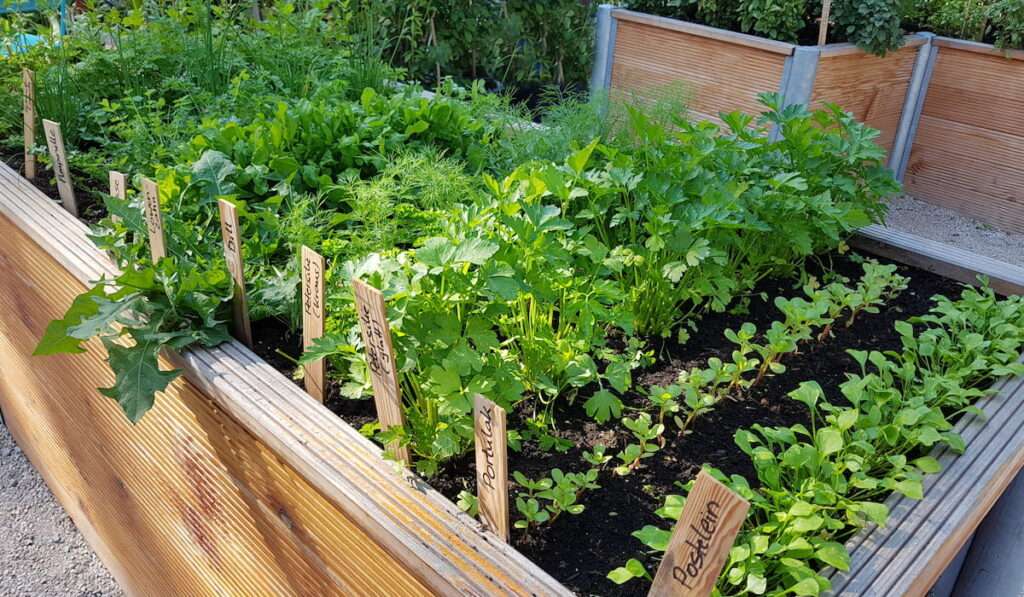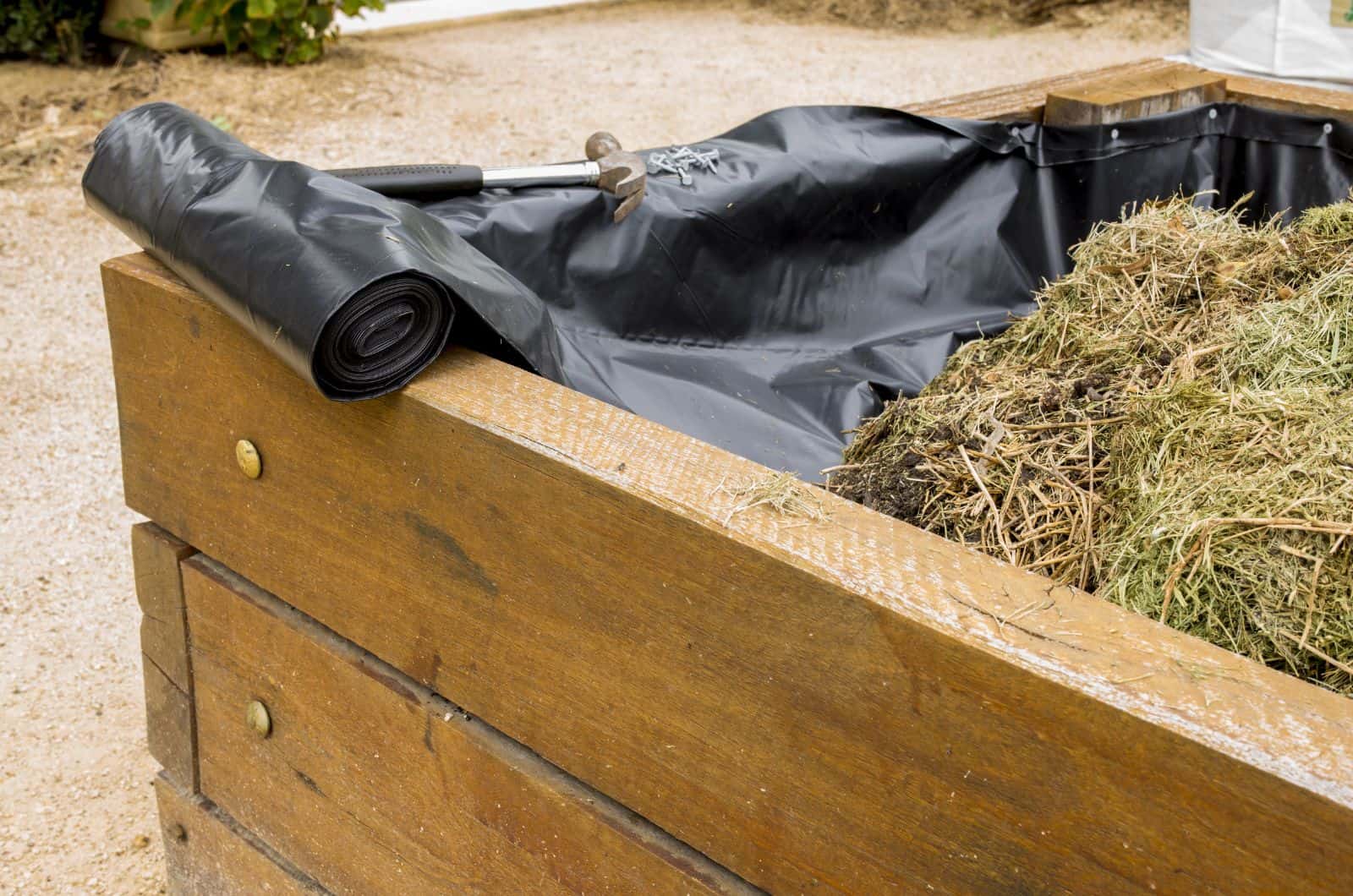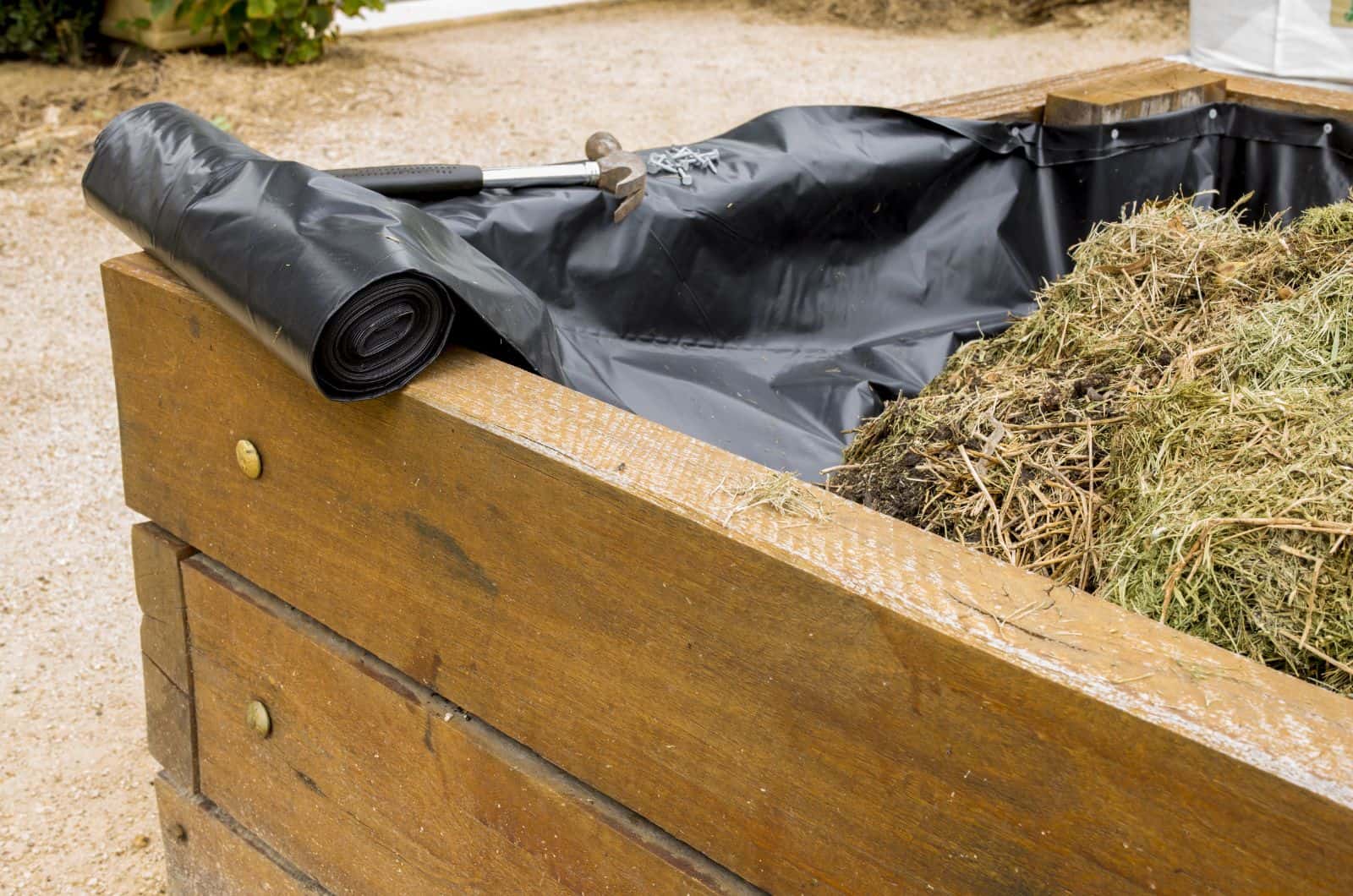In this article, we will explore the pros and cons of using plastic liners in raised garden beds. We will discuss how plastic liners can benefit your gardening efforts, such as preventing weed growth and retaining moisture. However, we will also address the drawbacks, including potential harm to the environment and risk of trapping excess moisture. By the end, you will have a better understanding of whether or not lining your raised garden bed with plastic is the right choice for you.
Pros and Cons of Using Plastic Liners in Raised Garden Beds
When it comes to gardening, raised beds offer numerous advantages – improved soil drainage, better pest control, and easier access for planting and harvesting. One popular question among gardeners is whether or not to line their raised beds with plastic. While there are both benefits and drawbacks to using plastic liners, it ultimately depends on your specific gardening goals and environmental considerations.

Benefits of Using Plastic Liners in Raised Garden Beds
Plastic liners can provide several advantages when used in raised garden beds. Let’s explore some of these benefits:
Improved Moisture Retention
One of the major advantages of using plastic liners is improved moisture retention in the soil. Plastic helps to reduce water evaporation, effectively keeping the soil moist for a longer period. This is particularly beneficial in dry and arid climates, where water conservation is crucial for plant survival.
Prevention of Weed Growth
Weeds can be a relentless enemy in any garden. By lining your raised beds with plastic, you can create a barrier that prevents weed seeds from germinating and taking over your garden. This can significantly reduce the time and effort required for weed control, allowing you to focus more on tending to your plants.
Protection Against Soil Erosion
Plastic liners act as a barrier between the soil and the elements, providing protection against erosion caused by heavy rainfall or wind. By preventing the soil from being washed away, plastic liners help maintain the integrity and structure of the beds, ensuring optimal growing conditions for your plants.
Extended Growing Season
Plastic liners can help extend the growing season by providing an additional layer of insulation. The plastic acts as a shield, protecting plants from cold temperatures and frost. This can be particularly advantageous for gardeners in colder regions, allowing them to start planting earlier in the spring and continue harvesting later into the fall.
Reduced Soil Contamination
In areas where the soil may be contaminated with heavy metals or other pollutants, plastic liners can serve as a protective barrier, preventing these harmful substances from leaching into the soil. This is especially important if you are growing crops for consumption, as it helps protect the safety and quality of your harvest.
Drawbacks of Using Plastic Liners in Raised Garden Beds
While there are clear benefits to using plastic liners, it’s important to consider the potential drawbacks as well. Here are a few concerns that gardeners should be aware of:
Risk of Overwatering
Although plastic liners can enhance moisture retention, there is a risk of overwatering your plants. Plastic does not allow for proper drainage, which can lead to waterlogged soil and root rot. To avoid this issue, it’s important to carefully monitor soil moisture levels and adjust your watering practices accordingly.
Impaired Drainage
In addition to the risk of overwatering, plastic liners can impede the natural drainage of the soil. Without proper drainage, excess water can accumulate, causing soil compaction and nutrient deficiencies. It’s crucial to ensure that adequate drainage holes are created in the plastic liner to allow excess water to escape.
Increased Soil Temperature
Plastic liners can raise the temperature of the soil, especially when exposed to direct sunlight. While this can be beneficial in cooler climates, it can be detrimental in hot regions where excessive heat can lead to stress or even death of plants. Consider using lighter-colored plastic or providing shade to mitigate this issue.
Limited Nutrient Exchange
The presence of plastic liners can inhibit the exchange of nutrients between the soil and the surrounding environment. This can result in nutrient imbalances and deficiencies, affecting the overall health and productivity of your plants. Regular soil testing and appropriate fertilization can help mitigate this concern.
Potential Chemical Leaching
Some plastics may contain harmful chemicals that can leach into the soil over time. This is particularly concerning if you are growing food crops or have concerns about environmental pollution. Choosing plastic liners made from food-safe or environmentally friendly materials can help minimize this risk.
Alternative Materials for Lining Raised Garden Beds
If you decide that plastic liners are not the best option for your raised garden beds, there are alternative materials you can consider. Here are a few options:
Natural Biodegradable Mulch
Using natural biodegradable mulch, such as straw or wood chips, can provide similar benefits to plastic liners in terms of weed suppression and moisture retention. Over time, the mulch breaks down and contributes to the organic matter in the soil, enriching its fertility.
Landscape Fabric
Landscape fabric is a woven material specifically designed to inhibit weed growth while allowing water and nutrients to pass through. It provides a durable and breathable barrier that can be an effective alternative to plastic liners.
Geotextile Materials
Geotextile materials, such as geotextile fabric or permeable membranes, are commonly used in construction projects to stabilize soil and prevent erosion. These materials can also be adapted for use in raised garden beds, offering both weed control and improved drainage.
Considerations Before Using Plastic Liners
Before deciding to line your raised garden beds with plastic, it’s important to consider a few factors that may influence your choice. These include:
Local Climate and Weather Conditions
The climate and weather patterns in your region can impact the effectiveness of plastic liners. Consider factors such as temperature, rainfall, and overall moisture levels to determine whether plastic will be beneficial or detrimental to your gardening efforts.
Available Watering Methods
The watering method you use in your garden can also influence whether or not plastic liners are a suitable option. If you rely on overhead watering or heavy rainfall, the lack of drainage in plastic-lined beds may cause waterlogging issues. However, if you primarily use drip irrigation or other controlled watering methods, the risk of overwatering may be mitigated.
Type of Crops to be Grown
Different plants have varying water and drainage requirements. Consider the specific needs of the crops you plan to grow in your raised beds to determine if plastic liners will help or hinder their growth.
Environmental Impact
Finally, it’s important to consider the environmental impact of using plastic liners. Plastic waste is a significant concern, and using non-biodegradable materials in your garden may be at odds with sustainability goals. If environmental stewardship is a priority for you, exploring alternative materials may be a more suitable choice.

How to Properly Install Plastic Liners in Raised Garden Beds
If you decide that plastic liners are the right choice for your raised garden beds, here are some steps to ensure proper installation:
Prepare the Garden Bed
Before installing the plastic liner, prepare the raised bed by removing any existing vegetation, rocks, or debris. It’s also a good idea to amend the soil with organic matter to improve its fertility.
Measure and Cut the Plastic Liner
Measure the dimensions of your garden bed and cut the plastic liner accordingly. Make sure to leave a few inches of excess liner on all sides to ensure complete coverage.
Secure Plastic Liner to Sides of the Bed
Lay the cut plastic liner on the bottom of the raised bed and secure it to the sides using landscape staples or by tucking it under the edges. Ensure that the liner is tightly stretched to minimize wrinkles or folds.
Create Drainage Holes
Using a sharp tool, carefully create drainage holes in the plastic liner. These holes will allow excess water to escape, preventing waterlogging and facilitating proper drainage.
Cover with a Layer of Soil or Mulch
Once the plastic liner is securely in place, cover it with a layer of soil or mulch. This will help hold the liner in place and create a more natural appearance for your garden bed.
Maintenance Tips for Raised Garden Beds with Plastic Liners
To ensure the optimal performance of your raised garden beds with plastic liners, here are some maintenance tips to keep in mind:
Regular Monitoring of Soil Moisture
Since plastic liners can affect soil moisture levels, it’s important to monitor the moisture content regularly. Use a moisture meter or check the soil by hand to determine if watering is necessary. Adjust your watering schedule accordingly to prevent overwatering or underwatering.
Weed Management
While plastic liners can help reduce weed growth, some weeds may still find their way into your garden beds. Regularly inspect your raised beds and promptly remove any weeds that appear. A layer of mulch can also be applied to further suppress weed growth.
Proper Mulching Techniques
Mulching the soil surface can help preserve soil moisture, suppress weed growth, and moderate soil temperatures. Choose organic mulch materials, such as straw, wood chips, or compost, and apply a layer of about 2-3 inches thick.
Regular Cleaning and Sanitization
To prevent the buildup of pathogens or pests, it’s important to regularly clean and sanitize your raised beds. This can include removing any plant debris, disinfecting tools, and periodically applying an organic fungicide or pesticide if necessary.
Case Studies: Successful Use of Plastic Liners in Raised Garden Beds
To further illustrate the potential benefits of using plastic liners in raised garden beds, here are a few case studies:
Case Study 1: Increased Crop Yield and Water Efficiency
A study conducted in a water-scarce region found that using plastic liners in raised garden beds resulted in increased crop yields and improved water efficiency. The plastic liners helped to retain moisture in the soil, reducing the need for frequent irrigation.
Case Study 2: Weed Control and Reduced Soil Erosion
In a study comparing different bed lining techniques, it was observed that plastic liners significantly reduced weed growth and prevented soil erosion. The beds lined with plastic required minimal weeding and showed less signs of soil degradation compared to the control group.
Case Study 3: Protection Against Contaminated Soil
In an urban gardening project located in an area with potentially contaminated soil, plastic liners provided an effective barrier against harmful substances. Regular soil testing showed that crops grown in plastic-lined raised beds had lower levels of contaminants compared to those grown directly in the soil.
Expert Opinions on Using Plastic Liners in Raised Garden Beds
Experts in the field of gardening and sustainable agriculture offer valuable insights into the use of plastic liners in raised garden beds. Here are a few expert opinions:
Expert 1: Benefits Outweigh the Drawbacks
According to Dr. Jane Smith, a horticulturist with over 20 years of experience, the benefits of using plastic liners, such as improved moisture retention and weed control, outweigh the potential drawbacks. Dr. Smith suggests proper installation and maintenance as key factors for successfully using plastic liners.
Expert 2: Consider Alternatives for Sustainable Gardening
Professor John Green, an environmental scientist, recommends considering alternative materials for lining raised garden beds to minimize the environmental impact. Professor Green suggests exploring biodegradable mulches or geotextile fabrics as more sustainable options.
Expert 3: Proper Installation and Maintenance Is Key
Master Gardener Sarah Thompson emphasizes the importance of proper installation and maintenance when using plastic liners. She highlights the need for regular monitoring of soil moisture, efficient weed management, and responsible use of water and fertilizers to ensure the success of raised garden beds.

Testimonials from Gardeners Who Have Used Plastic Liners
Real-life experiences from gardeners who have used plastic liners in their raised beds can provide valuable insights. Here are a few testimonials:
Testimonial 1: Improved Plant Health and Growth
“Using plastic liners in my raised beds has significantly improved the health and growth of my plants. The moisture retention properties have reduced the frequency of watering, and my plants are thriving like never before!” – Jennifer M., avid gardener
Testimonial 2: Easier Weed Control
“I’ve always struggled with weed control in my garden beds, but since lining them with plastic, I’ve noticed a remarkable reduction in weeds. It has made gardening much more enjoyable and much less time-consuming!” – Michael H., hobby gardener
Testimonial 3: Extended Growing Season
“With the help of plastic liners, I’ve been able to push the boundaries of my growing season. I can start planting early in the spring and continue harvesting well into the fall, giving me a longer growing season and a greater variety of crops.” – Sarah L., organic gardener
Conclusion
Deciding whether to use plastic liners in your raised garden beds is a personal choice that depends on various factors. By weighing the pros and cons, considering your gardening goals, and evaluating the potential environmental impact, you can make an informed decision that aligns with your needs and values. Remember to install and maintain the plastic liners properly to maximize their benefits and minimize any drawbacks. Whether you choose to use plastic liners or explore alternative materials, the ultimate goal is to create a thriving garden that brings you joy and produces bountiful harvests.





